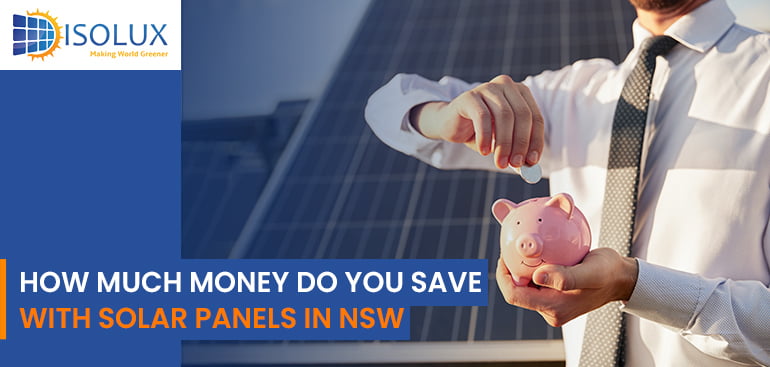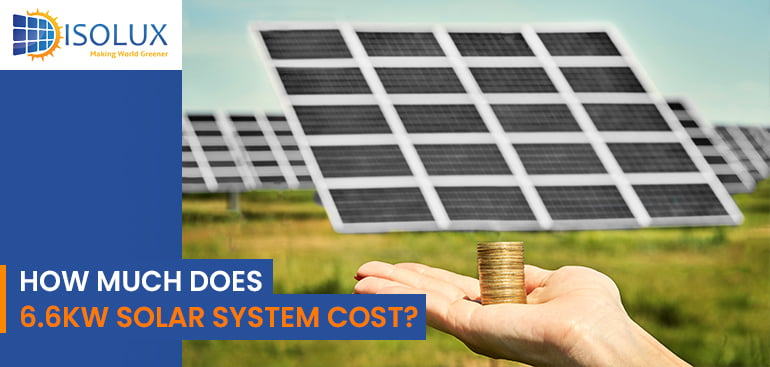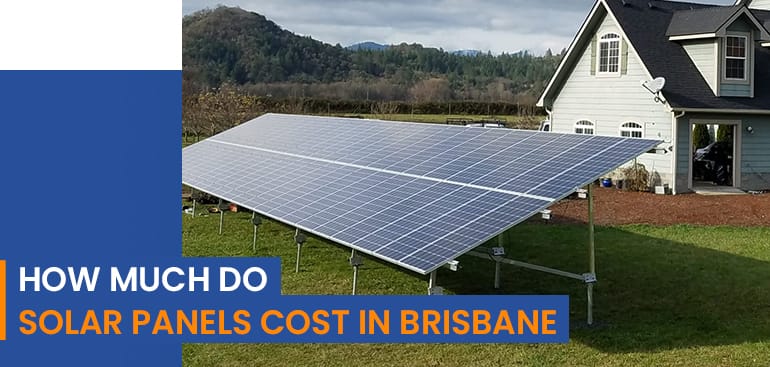The savings you can expect from installing solar panels in New South Wales (NSW) in 2024 depend on various factors including the size of the solar system, the available rebates, and energy usage patterns.
How Much Money You Can Save With the Solar Panel System?
A typical 6.6kW solar system in NSW can cost between $5,500 to $8,500. Such a system can offer savings of $1,200 to $2,000 annually, with a payback period of 4 to 7 years. Monthly savings can range from $300 to $500 per quarterly bill, depending on electricity usage and when it’s used. The more you can use solar power directly from your panels (self-consumption), the greater the savings, since the cost of buying electricity is higher than the feed-in tariff rate for selling excess solar power back to the grid.
The amount of money you can save with solar panels also depends on several factors, including your location, the size of your solar system, local energy prices, and any available incentives or rebates. Here are some key considerations that can help estimate the potential savings:
Solar System Size:
The size of your solar panel system is a crucial factor. Larger systems can generate more electricity, leading to higher potential savings. The size is typically measured in kilowatts (kW) or kilowatt-hours (kWh).
Sunlight Exposure:
The amount of sunlight your location receives directly impacts the efficiency of your solar panels. Regions with more sunlight, such as sunny climates or areas with fewer obstructions like tall buildings or trees, generally yield higher energy production.
Local Energy Prices:
The cost of electricity in your area is a significant factor. If your local utility charges higher rates, the potential savings from generating your electricity with solar panels will be more substantial.
Government Incentives and Rebates:
Many governments offer incentives, rebates, or tax credits to encourage the adoption of solar energy. These financial benefits can significantly reduce the upfront cost of installing solar panels, enhancing your overall savings.
The Small-scale Technology Certificates (STCs) are a key financial incentive under the Solar Renewable Energy Certificates Scheme (SRES). The number of STCs a system is allocated reduces every year, and their market value has been declining, which is expected to continue in 2024. The rebate value for STCs in 2024 will depend on the number of certificates your installation qualifies for and their current market value.
NSW Specific Programs:
NSW offers several rebate and subsidy programs to promote solar energy. The NSW Solar Panel Rebate Program, for instance, provides up to $7,000 in rebates or loans for solar panel installations. This rebate is reduced annually and is part of a strategy to achieve net-zero emissions. Additionally, the NSW government has programs like the Solar for Low Income Households trial, offering eligible residents a free 3-kilowatt rooftop solar system, expected to save around $300 annually on energy bills.
Net Metering:
Net metering allows you to earn credits for excess electricity your solar panels generate and feed back into the grid. You can use these credits during times when your solar panels are not producing enough energy, such as at night. This can further contribute to savings on your electricity bills.
System Maintenance and Lifespan:
Solar panels generally require minimal maintenance, and their lifespan is typically 25 years or more. The long-term durability and low maintenance costs contribute to sustained savings over the life of the system.
Financing Options:
The method you choose to finance your solar panel installation can affect your savings. Whether you purchase the system outright, use a solar lease, or opt for a power purchase agreement (PPA) can impact the economic benefits.
Is Solar Power Truly a Money-Saving Investment?
The economic viability of solar power has improved significantly, with many discovering that a high-quality solar panel system can pay for itself in as little as 3 or 4 years. In contrast to the past, when it took 7 years or more to break even, the current payback period reflects a more rapid return on investment.
For those aiming to maximize savings, a strategic approach involves oversizing the solar array. This ensures an abundance of solar power during the summer months, enabling households to use energy-intensive appliances like air conditioners more frequently. Moreover, anticipating the addition of battery storage shortly aligns with the evolving landscape of solar technology.
As a general guideline, a solar power system typically delivers savings of up to approximately $400 per year for every installed kilowatt (kW). The shortened payback period and potential for substantial savings make solar power an increasingly attractive option for those seeking both environmental sustainability and financial efficiency.
Payback Time for Solar Panels
When deciding on a solar panel system, one of the key factors to think about is how quickly the system covers its cost. Ideally, you’d see a return on your investment in 3 to 4 years.
If you’re comfortable with a more extended payback period, you have two main options: investing in reputable brands or opting for a larger solar system. We’re here to assist you in making the right choice, and the decision ultimately rests with you. However, it’s crucial to note that when it comes to solar panels, the saying “you get what you pay for” holds. Investing in quality ensures better performance, durability, and overall reliability of your solar system.
Conclusion
Embracing solar energy in Sydney isn’t just a smart environmental choice; it’s a wise financial decision. With Isolux Solar’s expertise, transitioning to solar is easier and more beneficial than ever.




